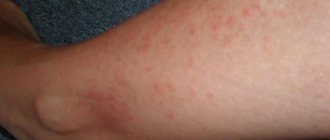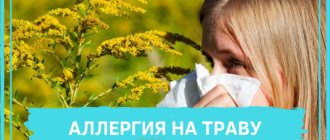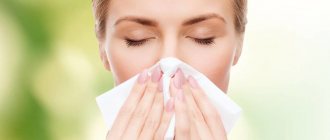With the arrival of spring, people often encounter various insects. Contact with them can provoke unusual manifestations in the body. In addition to the well-known symptoms, an allergy to a bee or wasp sting is considered a common occurrence.
The occurrence of this problem is explained by the influence of toxins that, together with the poison of flying animals, penetrate into the blood. If you are prone to an allergic reaction, serious complications arise, including anaphylactic shock. Therefore, it is recommended to know the main signs of pathology, as well as methods of treatment and prevention.
Causes of insect allergies
Disturbances in the functioning of the immune system that arise as a result of interaction with insects or their metabolic products are called insect allergies. Most often, with a bite, redness of the affected area and slight swelling are observed. Moreover, these symptoms disappear on their own after some time.
But it happens that due to contact with the sting, dangerous allergenic swelling occurs, accompanied by itching and redness. At the same time, the body temperature rises, nausea and weakness appear.
Insect allergies can occur at any age. Its main cause is considered to be the rapid entry of an allergen, in this case, poison, into the body. Other factors that provoke pathology include:
- hereditary predisposition;
- weakened immune system – due to chronic diseases or after serious illnesses, the body is unable to cope with the invading allergen;
- psoriasis or dermatitis can make the risk of a reaction to a bee sting even greater;
- exceeding the permissible norm of poison entering the body (0.3 mg) - in case of simultaneous attack by several bees;
- if insects bite several times over a short period of time, then an increased amount of toxins accumulates.
The surge in pathology occurs in the summer. And each subsequent manifestation of allergy will have more severe symptoms, which is explained by a decrease in the number of antibodies.
Features of the disease
Histamine is the cause of all the troubles of people suffering from allergies. This hormone is released into the blood when any harmful compound enters the body, resulting in allergy symptoms.
In the event that a person’s immune system is not healthy, completely harmless elements are mistaken for dangerous substances, and the body reacts in its own way. In the case of a reaction to insects, a person suffers due to:
- discharge;
- bites;
- particles of chitin found in dust.
Insect allergy is a very common disease, and in some cases the reaction is fatal, for example, with multiple wasp and bee stings.
The danger of an allergic reaction to a bee or wasp sting
With an individual tendency to negative manifestations of the body, consequences such as Quincke's edema or anaphylactic shock may appear, even if one bee bites.
The latter is characterized by a violation of the vital functions of the body. Failure to provide first aid in a timely manner leads to death. When the respiratory tract is affected, the victim develops swelling of the larynx, which is why he will not be able to breathe normally. At the same time, the heartbeat increases, suffocation appears, and sharp surges in pressure are observed. This condition requires emergency measures, since the faster the symptoms grow, the more difficult it is to neutralize allergic manifestations.
Bee or wasp sting. First aid, allergies
Symptoms
As with other insect bites that can cause allergies, the main symptom is pain. It is very strong, in some situations it can lead to loss of consciousness. By the way, this is a very dangerous condition when it comes to anaphylactic shock - a person who loses consciousness sharply loses his chances of surviving after multiple bites.
Places of contact with the sting turn red and swell. The swelling resembles a round lump with a whitish spot in the center. Along with the pain, itching and severe burning often appear.
As the poison spreads throughout the body, other signs of an allergic reaction appear:
- hard breath;
- cough;
- allergic rhinitis;
- conjunctivitis;
- pain in the stomach;
- nausea;
- temperature increase;
- chills;
- rave;
- loss of consciousness (very dangerous);
- vomit;
- salivation;
- strong thirst.
The victim is in great pain and his condition is getting worse. Quite often, with multiple wasp stings, a panic attack begins. This is due to the effect on the heart muscle. A person is afraid of death, afraid of being alone.
Important! In children, symptoms develop much faster and are very acute. The situation is complicated by the fact that the child cannot always clearly formulate his feelings, which makes it difficult to choose the right ways to provide help.
How does the pathology manifest itself?
Immediately after an insect attack, a burning sensation and pain appears. After a few minutes, the affected area of skin turns red and thickens. After a couple of hours, these symptoms are replaced by severe itching. At the same time, a deterioration in general condition, nausea, and dizziness may occur.
These signs refer to natural reactions that occur if you are bitten by a bee.
And if you are predisposed to allergic reactions, the most common insect attack can provoke serious consequences.
An allergy to a wasp or bee sting is characterized by the appearance of both local and general symptoms. In this case, the following clinical picture is observed:
- severe burning pain is felt;
- difficulty breathing, coughing;
- from the digestive side, vomiting and diarrhea occur;
- swelling and redness not only of the affected area, but also of neighboring tissues;
- general condition worsens, headaches, chills, weakness appear;
- lacrimation;
- body temperature rises;
- there are sudden changes in blood pressure, heart pain, rapid heartbeat;
- allergic rhinitis.
The severity of symptoms is directly related to the dose of venom received, individual sensitivity and location of the bite. The upper torso and lymph nodes are considered the most vulnerable, since swelling of these parts of the body can cause suffocation.
How to find out if you have an allergy
It is very difficult to predict the body’s reaction to wasp venom in advance. There are situations when insects have bitten many times, and then suddenly a severe allergy develops with difficulty breathing, swelling of the larynx, diarrhea, and impaired coordination of movement.
The likelihood of developing an allergy increases in the absence of antibodies to wasp venom in the body, or in the presence of a genetic predisposition. When an allergy to wasp venom is detected, specialists analyze the information and symptoms. The analysis itself is carried out using in vivo and in vitro methods. Determine the presence and quantity of antigens to the poison. Additionally, the body is examined for helminths, fungi, pathogens, and viruses to determine the nature of the allergy.
In vivo methods involve subcutaneous or intravenous administration of the allergen, followed by observation of the body's reaction. The advantage of diagnosing is low cost, the disadvantage is the possible development of an allergic reaction if wasp venom enters the blood again. The in vitro method does not involve the introduction of an allergen; it identifies not one, but a group of possible allergens. The analysis period is 7-10 days. The average price of the procedure is 680 rubles. It is almost pointless to treat the disease; all efforts must be directed towards preventing a complex reaction.
A wasp sting does not go unnoticed. At the site of the sting, pain, burning, and strong pinching are felt. The venom of this insect can cause very strong allergic reactions. How does an allergy to wasps manifest itself, why is it dangerous, and what to do if an unpleasant incident occurs? Every person should know the answers to these questions. After all, no one is safe from the bites of a “striped” insect.
Allergen detection methods
The reaction to an insect attack directly depends on the characteristics and strength of the immune system. To identify an allergen, doctors adhere to the following algorithm:
- taking an anamnesis, during which a hereditary predisposition to allergies is determined, as well as specific reactions and symptoms that occur after an insect attack;
- blood test - it helps to detect antibodies to the venom of flying animals;
- An internal test is carried out, when a minimum dose of the allergen is injected under the skin - if there is a reaction to bee venom, a local symptom of the pathology will immediately appear.
You can find out if you are allergic to a bee sting even before the attack. To do this, you should contact special laboratories, take tests and an allergy test. If a reaction to bees is detected, bee products such as wax and honey are also at risk.
Bee sting. Swelling, swelling and allergies after a bite. (need to apply cold)
Treatment
If you are stung by a bee, you must first provide first aid. It involves removing the sting that the insect left at the site of the bite. It is important not to forget that when carrying out such procedures, all antiseptic conditions are observed. The affected area should be treated with an antiseptic.
Modern, effective medications that are used as emergency therapy - Diazolin, Erius, Pipolfenon. It is recommended that allergy sufferers always have one of these medications with them. For local therapy, special glucocorticosteroid ointments are usually prescribed. For example, Prednisolone ointment, Hydrocortisone ointment.
Ascorbic acid and calcium gluconate, which are administered intravenously, help get rid of edema. Further treatment of the patient is carried out in a hospital under the supervision of a doctor. In case of complications, a short course of hormonal drugs is prescribed.
Allergy to bee stings: how to treat?
If after a sting the temperature rises and chills begin, it is most likely that the victim is allergic to bee venom. In this case, you need to give him a large amount of liquid. It’s good if it’s weak, warm tea with sugar. To cope with the chills that occur with a bee sting allergy, it is recommended to cover the person with a blanket and, possibly, apply heating pads.
To reduce the release of histamines into the blood during allergies, it is recommended to take antihistamines. They are prescribed by an allergist, so it is necessary to take the victim to a medical facility or call an ambulance. Treatment of allergies to bee stings with hydrocortisone ointment is often prescribed - however, it is worth remembering that this remedy is a hormonal drug, so when using it you need to weigh the pros and cons.
An allergy to bees is almost always accompanied by severe itching, which may not be limited to the site of the bite, but spread throughout the body. In this case, it is recommended to apply antipruritic allergy medications to the itchy skin - for example, Soventol gel or Gardex Family balm. La-Cri restorative cream for sensitive skin also has an effective antipruritic effect.
In cases where the wound has been scratched, an infection has entered it, and local inflammation has begun, it is worth smearing the wound with Levomekol or other local antibacterial drugs.
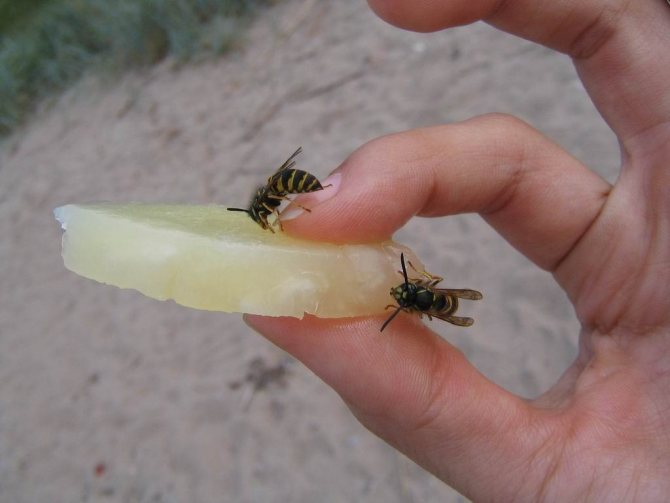
If you are allergic to a bee sting, the sting site is very painful, it is recommended to take an anesthetic orally. You can also use topical medications. Fenistil gel, Avantan and Menovazan ointments, Menovazin solution, Panthenol cream are suitable for this purpose.
If an allergy to a bee sting is accompanied by swelling (especially with swelling of the mucous membranes), decongestant medications can be prescribed - Xylometazoline, Tetrizoline.
Many people suffer from allergies caused by the venom of a bee sting. They experience hives, severe swelling, and anaphylactic shock. A single bite can cause the most unpredictable consequences. To relieve swelling, you need to disinfect the wound, then apply a cold lotion using hydrogen peroxide or ammonia. Treatment includes the use of antihistamines: tablets, injections, ointment.
To treat a bee venom allergy, it is important to know some facts. Useful articles on the topic - why bee venom is a medicine.
There are three stages of allergy manifestation:
- increased body temperature, development of urticaria and Quincke's edema, chills;
- the rhythm of the heart muscle is disrupted, intestinal spasm appears, these symptoms are accompanied by swelling of the mucous membrane;
- the third stage is considered the most dangerous because it is accompanied by anaphylactic shock and death.
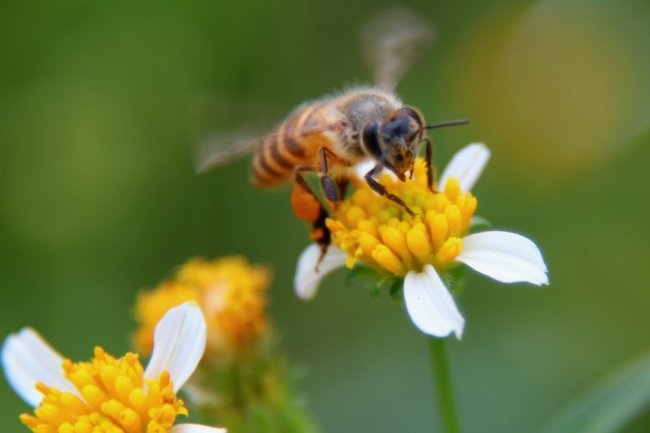
People who have an allergic reaction to bee venom should carry a syringe filled with adrenaline to avoid anaphylactic shock. This manipulation will help in case of a single bite. Multiple bites require emergency medical attention.
Allergy to bees can be treated with Suprastin, which is considered an effective antihistamine. Dosage: adults - 1 tablet three times a day, children (6-14 years old) - ½ tablet twice a day.
First aid
If a person has been bitten by a bee, certain actions must be taken:
- To begin with, the sting is removed from the wound so that it does not penetrate deeper. All manipulations are carried out using tweezers, which are treated with an alcohol solution. If this equipment is not available, remove the bag containing the poison using a disinfected needle.
- The affected area must be treated with a soap solution. Ethyl alcohol or manganese is added to the liquid. You can use ammonia, previously diluted with water.
- To avoid the development of swelling and relieve swelling, use ice, cold water, and dandelion juice.
In case of multiple bites, it is advisable to provide the victim with plenty of warm fluids. If possible, you need to take an antihistamine - Suprastin or Tavegil. Hydrocortisone ointment, Fenistil gel and other preparations are suitable for topical use. A doctor may prescribe Loratadine for a bee sting.
Folk remedies
To combat swelling and pain from a bee sting, you can use popular folk remedies:
- garlic juice;
- mint juice;
- onion pulp or juice;
- a mixture of water and soda;
- a product based on aspirin, activated carbon and water;
- plantain leaf, dandelion leaf.
Tags: allergic, bee, reaction, bite
About the author: admin4ik
« Previous entry
First aid
The danger of negative manifestations when coming into contact with insects is that they often bite in nature, where there are no medical facilities. In such situations, it is important to know the basic principles of emergency care.
The algorithm of actions after a bee attack involves performing the following actions:
- use tweezers to remove the sting - the longer it is in the human body, the more toxic substances are released, spreading through neighboring tissues;
- tweezers (if not, then pull them out with your hands) must first be treated with alcohol or any strong alcohol;
- after removing the sting, the wound should be disinfected with hydrogen peroxide and alcohol tincture;
- the itchy area of the body is lubricated with antihistamine ointment (for example, Fenistil);
- apply ice to the affected area, as cold prevents the movement of poison through the lymphatic system;
- to prevent the development of general allergy symptoms, you should take any anti-allergy medicine;
- Plain water can help remove toxins from the body, so it is recommended to drink as much liquid as possible after a bite.
In case of a wasp sting, first aid is similar in algorithm to the measures used in the event of a bee attack. The only exception is the absence of a sting, since a wasp, unlike a bee, is capable of making several attacks without losing its stinging instrument.
Therefore, before deciding what to do about a wasp sting, you should treat it with vinegar and then apply cold. Then take the anti-allergenic drug orally and apply ointment topically to the wound.
There are situations when the use of conventional measures is not enough. If the following symptoms appear, you must call an ambulance:
- swelling of the larynx;
- severe vomiting;
- difficulty breathing;
- cardiopalmus;
- rash on the body;
- fainting.
Without the professional actions of doctors, it is impossible to eliminate allergic manifestations in these cases.
The reason for contacting specialists is considered to be the simultaneous bite of several insects, since the concentration of poison in the body will be greatly exceeded.
Emergency actions
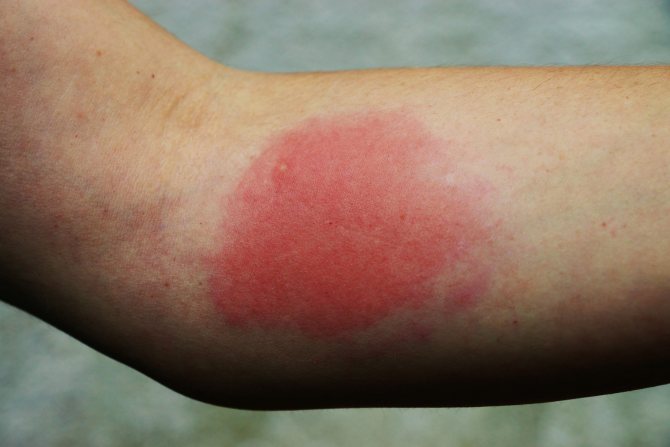
Immediately after the bite, emergency measures are taken. First aid consists of reducing swelling, removing the sting, restoring water balance, and psychological assistance (especially for children). It is important not to panic and follow these procedures:
- Remove the sting from the wound with tweezers. Disinfect the place before and after with peroxide, alcohol, iodine.
- Apply a sterile bandage.
- Apply cold water to the wound. This slows down the spread of poison in the body. You can’t squeeze it out: it’s so easy to get an infection into the wound.
- Give the person an antihistamine to drink (to prevent an allergic reaction).
- Provide water and a place to rest.
We invite you to read: Tips from summer residents: how to store potatoes in an apartment
The ambulance team is called in the following cases:
- in the absence of allergies, if an adult has been bitten more than 10 times, a child - 3;
- if a person is allergic;
- if after assistance it gets worse, the person shudders or loses consciousness.
A tourniquet is applied to the arm or leg. It is fixed above the wound site for no more than 2 hours.
At home, the patient is advised to spend time in bed, take activated charcoal and carefully monitor his condition. Swelling is relieved with antihistamine gels or ointments. People with systemic allergies undergo therapy in the spring.
How to treat pathology?
Traditional antiallergic treatment consists of taking medications, which include:
- antihistamines - aimed at relieving the symptoms of pathology, as well as maintaining the normal functioning of the immune system;
- to reduce the amount of toxins that enter the body along with the poison, calcium gluconate is injected intravenously;
- decongestants - necessary in case of severe swelling of the tissues adjacent to the bite, as well as in cases of damage to the larynx and face;
- for injection blockade of the affected area, novocaine (0.5%) is injected intramuscularly;
- In case of severe intoxication of the body, blood is alkalized.
Subsequently, symptomatic treatment is carried out, in which painkillers are used (to eliminate headaches), Regidron (for dehydration after vomiting), activated charcoal or Smecta (for diarrhea and to remove toxins).
To speed up the healing of wounds, you can apply compresses of medicinal herbs (chamomile, chamomile, celandine).
How to avoid a bee or wasp sting?
Since encounters with insects most often occur in nature, when going on vacation, you should take care of your own safety:
- choose clothes that cover your arms and legs, and don’t forget about your hat;
- you cannot approach and disturb the hives there;
- if attacked, you can hide in the water;
- in order not to increase aggression, it is not recommended to wave your arms or make sudden movements;
- do not provoke the insect, as they will bite only in response to human actions;
- clothes of bright colors, sweets and fruits attract flying creatures;
- you should be careful when walking barefoot on the grass;
- beekeeping if you are prone to allergies is prohibited;
- While on vacation, you should use repellent aerosols.
Bees and wasps will never attack without reason. Therefore, to avoid their bite, you should choose places far from the hives, not provoke them again, and remain calm when they appear.
Anaphylactic shock. How not to die from allergies
Prevention
To avoid the occurrence of an allergic reaction, it is necessary to prevent the possibility of getting bee stings. It is important to understand that insects bite when they feel threatened. It is recommended to avoid walking near the apiary. You should not drive away bees by actively waving your arms.
If a person develops an allergy after a bee sting, he must always have medications with him to help promptly stop the symptoms. The doctor will tell you which medications to use in such cases.
Allergy to bee stings: preventive measures
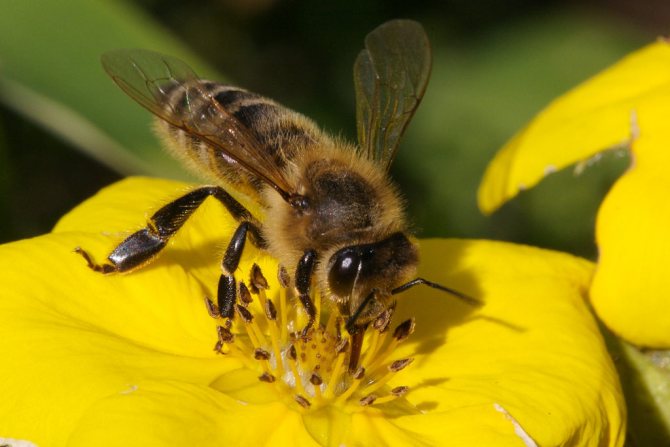
If it is planned that in the future a person will periodically come into contact with bees (for example, when breeding them), it makes sense to undergo allergen-specific immunotherapy. Its essence boils down to the fact that a substance that causes an allergy is introduced into the human body over a long period of time in small doses.
The main method of prevention, oddly enough, is to avoid bee stings. It is also important to stay away from hives. You cannot drive away a bee by waving your arms. Remember, bees never sting for no reason. It is forbidden to walk barefoot on grass and lawns to avoid unwanted contact with insects.
When going on vacation in nature, it is advised to wear clothing that covers as much as possible. Be sure to wear hats. After all, bees often sting specifically on the head, when entangled in the hair. It is important to remember that bees are very attracted to the smell of perfume. Attractive aromas include the smell of sweet food, alcohol, and flowers.
If you already know that you have allergies, when going outdoors, be sure to take with you a first aid kit with all the necessary antihistamines. Many people go to their dachas in the summer. So, when working in a summer cottage, you need to use gloves. In addition, please observe the following rules:
- During the warm season, do not wear too bright clothes;
- Do not use cosmetics, hairsprays, or “sweet” deodorants;
- Avoid trash containers and littered places;
- Install screens on the windows in the house;
- Use extreme caution when consuming drinks and food outdoors;
- Use special aerosols that repel insects.
All those who are allergic to bee venom provokes anaphylactic reactions need to follow the simplest preventive measures in order to avoid various negative consequences that can lead to death. People who have suffered a toxic reaction of the body to the simultaneous penetration of an excessive amount of poison after repeated bee stings should also think about prevention, because in such situations anaphylactic shock is very often the result of all subsequent contacts with allergens, that is, with bees.
- Always wear shoes and do not take them off.
- Do not use any hairsprays, perfumes, or any other cosmetic products with aromatic fragrances, since all this
- lures insects, increasing the likelihood of a bite.
- Purchase and carry insecticidal aerosols.
- Install mosquito nets on windows.
- For any gardening work, wear gloves.
- Be extremely careful when preparing or eating food outdoors.
- A bee can easily get tangled in hair and then sting a person. To avoid its bite to the head, it is recommended to wear a hat.
- Do not stay close to garbage cans or be in contaminated areas, as food debris serves as bait for a wide variety of insects, including bees.
We suggest you read: Feeding bees in winter, spring and autumn
If a patient has previously experienced attacks of anaphylactic shock due to bee stings, you should always have a special anti-shock kit with you. It consists of antihistamines, as well as an ampoule of adrenaline. The patient is recommended to have four sets. One should always be at home, the second at work, the third with you, and the fourth in the car.
An allergy to the venom of a stinging insect can develop as a result of a single bite, even in a person who has not previously suffered from the disease. The only way to identify a high risk of severe reactions is an allergy test.
There is a treatment - immunotherapy. During the treatment process, a person is injected intramuscularly with minimal doses of venom from a bee, wasp, hornet, etc. and monitor possible reactions. The test method determines the poison to which the human immune system is sensitive.
The course of immunotherapy consists of regular administration of ever-increasing doses of poison. Over time, the body of a sensitive person “gets used to it” and stops responding to injections by developing allergies. At this stage, it can be assumed that a real bite from a stinging insect will not provoke the development of a fatal reaction in a “trained” organism.
